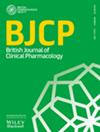Clinical relevance of immune checkpoint inhibitors for the analgesic effect of opioids: A retrospective propensity score analysis
Abstract
Aims
This study aimed to determine the clinical relevance of the influence of coadministration of immune checkpoint inhibitors (ICIs) on the analgesic effects of opioids, focusing on the amount of change in opioid dosage.
Methods
This study used data from patients who used opioids during anticancer therapy at the Oita University Hospital between September 2014 and October 2023. The primary outcome measure was the amount of change in morphine mg equivalent opioid dose during the period of anticancer therapy. Propensity score matching was performed to reduce confounding effects.
Results
The study enrolled 235 patients; 101 received ICI and 134 received no ICI. Before propensity score matching, there were significant differences between the ICI and non-ICI groups in lines of anticancer therapy, type of primary cancer, body mass index, maximum opioid dose and the amount of change in opioid dose. Following propensity score matching, 73 patients each were included in the ICI and non-ICI groups. Analysis of the propensity score-matched cohort showed a significant increase in the median amount of change in opioid dose in ICI group vs non-ICI group (22.5 vs. 15.0 morphine mg equivalents, interquartile range; 0.0, 40.0 vs. 0.0, 30.0, P = .044). Multiple regression analysis identified ICI administration and body mass index as significant independent factors associated with the amount of change in opioid dose (P = .014 and .027, respectively).
Conclusions
ICI administration significantly increased opioid dosage regardless of patient background. Our findings would provide valuable insight into future pain management strategies.

 求助内容:
求助内容: 应助结果提醒方式:
应助结果提醒方式:


